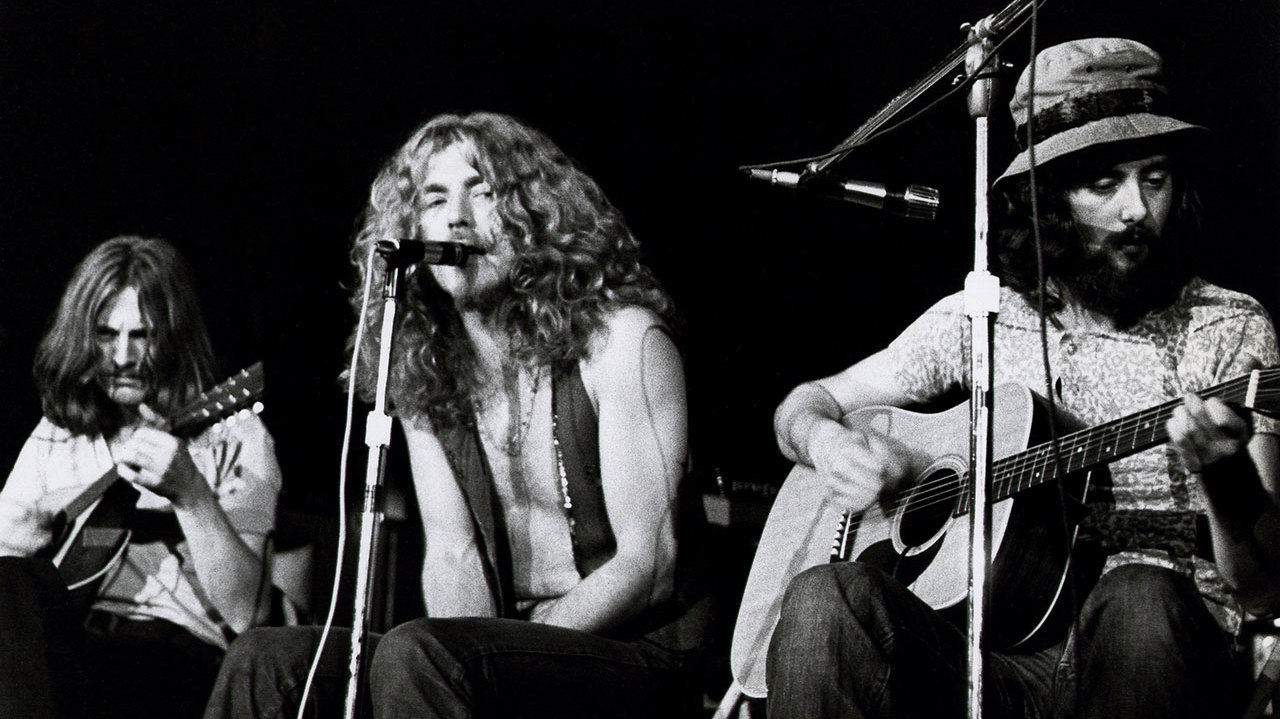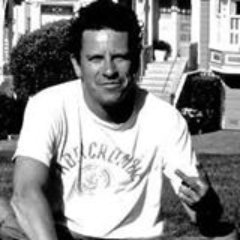Undisputed masters of light and shade, Led Zeppelin’s raw power was always tempered by a gentler, introspective side, often set in a context of eastern tunings, folkish instrumentation and quasi-mystical lyrical matter. The lion’s share of Zeppelin’s acoustic brilliance was written and heavily informed by stays in the Welsh countryside; the pastoral surroundings providing muse-like inspiration to the hard-touring musicians.
Remarkably, all of these tracks were written within a window of only a few years at the start of the band’s career, and though they occasionally returned to the acoustic form, nothing ever quite bettered these initial bursts of beauty. Here’s ten of them.

10. Bron-Yr-Aur (1975)
Correctly spelled by 1975 and the shortest track in the canon, this elegant, wistful remnant – originally written for Led Zeppelin III in 1970 – shimmers with squeaks, scrapes and sibilant reverb. Expertly used in The Song Remains The Same as the jet-lagged band are whisked through the morning streets of New York, bleary-eyed, it serves as quick line check to the plugged-in power that follows.
9. Black Mountain Side (1969)
Famously ‘learned’ from Bert Jansch with whom Page was self-admittedly obsessed at the time, this gets the nod ahead of other contenders due to the sheer technical prowess on display. It also serves as a classic example of Page’s musical fanaticism – magpie instincts driven by singular fixations, filtered and remoulded into sums greater than their parts. It’s not always disingenuous to suggest plagiarism and infatuation can be sides of the same coin.
8. Thank You (1969)
Marking the point where Plant grew into himself as a lyricist (Page: “I always knew he would”), and delivering a cracked, heartfelt paean to his wife – even if it was part motivated by guilt – there’s also some highly effective pop nous on the chorus, curiously bolstered by Page’s relatively weak backing vocals. Widely covered, versions range from the surprisingly great (Duran Duran), the idiosyncratic (Tori Amos), to the quick-call-the-police (Fred Durst, Wes Scantlin).
7. Hey, Hey What Can I Do (1970)
Though undoubtedly leveraged into its high standing due to its relative unavailability – B-side to Immigrant Song in 1970, not reappearing until 1990’s box set - there’s something awe inspiring about a band who can afford to side-line such obvious riches. John Paul Jones adds acoustic guitar to his Zeppelin CV, his mandolin and bass already driving the track, and Plant’s woman woes take centre stage, again
6. Gallows Pole (1970)
Mistakenly attributed as a derivative of Leadbelly’s Gallis Pole, the lineage of this unhappy medieval tale of vain noose-bound delay can be plotted centuries back to the English folk song The Maid Freed From The Gallows. Tellingly, there’s no freeing going on in Zep’s version. Gathering in both pace and intensity as the drama unfolds, the Unledded version makes great use of a hurdy-gurdy: an instrument that predates the song by another few hundred years.
- I’m A Led Zeppelin Fan – But I Still Wanted Them To Be Found Guilty
- Ozzy Osbourne: We're ending Black Sabbath on a high
- Top 10 Farewell Tours That Weren’t
- The top 10 best Beastie Boys songs with classic rock samples
5. The Battle Of Evermore (1971)
Lyrically, another mystic mash up of Celtic history, Middle-Earth musings and the fairylands of Albion, Page’s rudimentary mandolin skills effortlessly complement the call-and-response narrative. Sandy Denny’s role of town crier to the people was rewarded by her very own symbol – three inverted triangles – tucked away on the album’s inner sleeve. It’s the closest the band ever strayed towards the rustic folk sensibilities of Jethro Tull.
4. Babe I’m Gonna Leave You (1969)
First heard outside of the folk scene on a Joan Baez album, Page’s sizeable reworking of this Anne Bredon tune is the first airing of Plant’s ‘Baby, baby, baby’ trademark. A masterclass in what can be achieved with a quick right hand and an A-minor chord, the ghost of Davey Graham’s Anji hovers nearby, eventually banished by some flamenco flourishes and Bonham’s heads-down heft.
3. Ramble On (1969)
An early reveal of the band’s beloved light/shade dynamic, Plant’s somewhat random conflation of Tolkien references with the odd tokenistic fair maiden chucked in might not make much narrative sense, but has proved to be a rock radio staple for decades. Speculation on the gently propulsive rhythm under Page’s percussive acoustic has been whittled down to John Bonham tip-tapping on either a sofa, his knee, or a guitar case. The smart money is on the latter.
2. That’s The Way (1970)
Originally titled The Boy Next Door, and another fruit of the Bron-Yr-Aur sessions, this bucolic meditation on life and love’s many splendours sparkles in its complacency. Page’s touch is so light it’s tempting to suspect studio trickery, but no. The whole thing is milky-smooth, almost cockily-relaxed and utterly definitive: an encapsulation of their acoustic abilities.
1. Going To California (1971)
The Hollywood hiraeth felt by Page and Plant while ensconced in rural Wales manifested itself in an unadorned love letter to Joni Mitchell and other notable blissed-out dwellers of Laurel Canyon. Plant’s near-naïve reflections on his sun-kissed introduction to the state’s enchantments adds acres of charm and pathos belying his tender years. Iced by Page’s modal drone-picking and Jones’ gossamer mandolin, the version on 2003’s DVD (Earls Court, ‘75) in particular is a thing of wonder.

